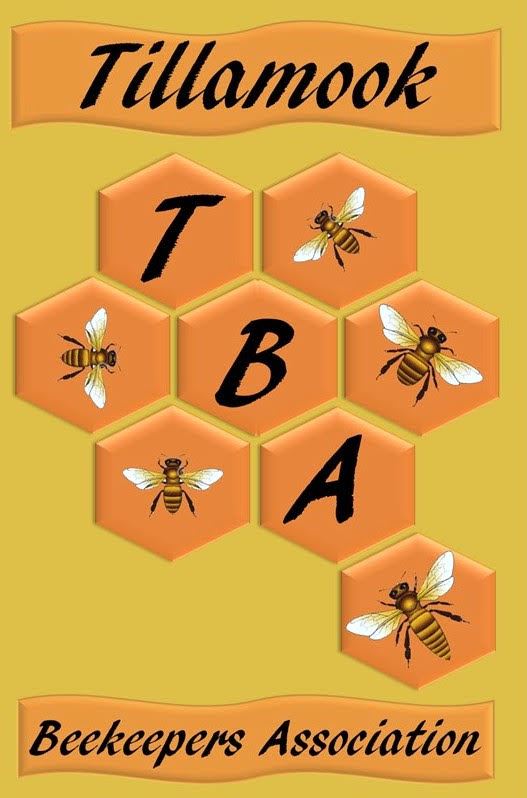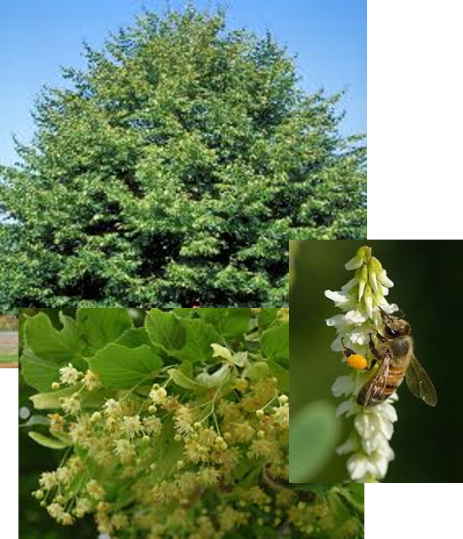Flowering Trees
Honey Bees and Trees
If you haven’t already read it, go into the main Foraging heading on the website and read Honey Bees and Flowers. There is a wealth of fascinating information that won’t be repeated here.
Planting bee-friendly trees is the best way to help save the honey bee. A flowering tree with a fifteen foot radius produces on average as many blossoms as two acres of flowers. Mike Connor of honeytreenursery.com has a long but good YouTube video: Bees and Trees
All fruiting trees are honey-bee magnets and you will be rewarded with much more fruit thanks to the honey bees.
Many of us don’t have the space to plant a tree in our own yard. Keep your eyes open for a place on one of your friend’s properties. Although most trees will take many years to mature the honey bees will need those flowers five or ten years from now as much as they need them now. When considering a birthday present or a memorial think about planting a bee-friendly tree!
|
|
Littleleaf Linden (Tilia Cordata) Blooms: July Zone: 4 to 7 Height: 30’ to 50’ Spread: 15’ to 30’ Sun: Full Water: Low once established Other: Very hardy |
|
Vine Maple (Acer circinatum) Blooms: Fall Zone: 7 to 8 Height: 10’ to 15’ Spread: 20’ Sun: Full sun to part shade Water: Low Tolerates: Drought once established Other: Quick grower; beautiful fall color; every bit as decorative as a Japanese maple; native Americans called it the “basket tree” because they made bows, baskets, snow shoes, etc. from this tree |
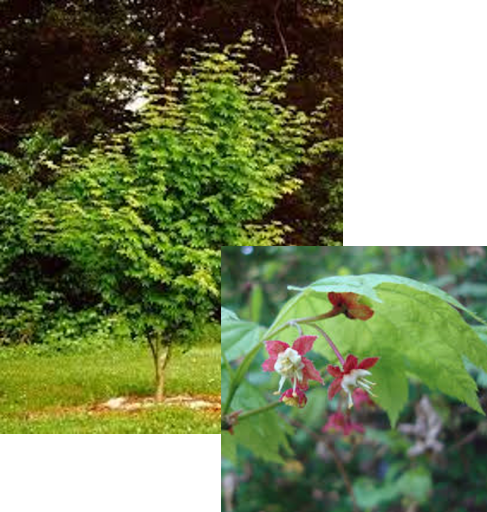 |
 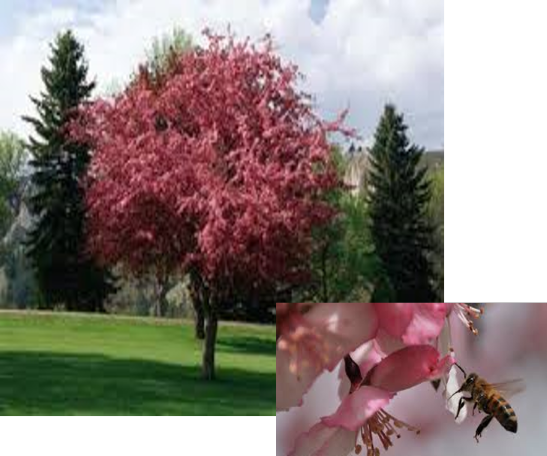 |
Crab Apple (Malus spp.) Blooms: Spring Zone: 4 to 8 Height: 10’ to 25’ Spread: 10’ to 25’ Sun: Full Water: Low once established Tolerates: Drought, any soil Other: Some bloom every other year |
|
Black Locust (Robinia pseudoacaia.) Blooms: Spring Zone: 4 to 8 Height: 40’ to 80’ Spread: 30’ to 70’ Sun: Full Water: Low Tolerates: Low maintenance Other: Very fragrant; can be invasive; thorns at the base of each leaf; seedpods hang for birds; flowers usually white but purple varieties are available |
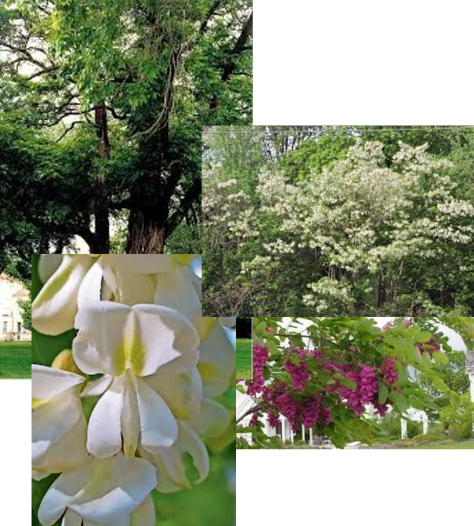 |
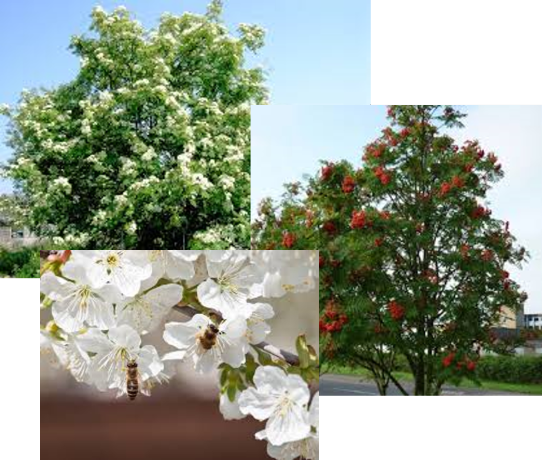 |
Mountain Ash (Sorbus spp.) Blooms: Late spring Zone: 3 to 7 Height: 15’ to 25’ Spread: 20’ to 30’ Sun: Full to part shade Water: Low once established Other: Great food for wildlife |
|
Strawberry Tree (Arbutus Marina) Blooms: Fall Zone: 8 to 9 Height: 40’ some smaller Spread: 25’ Sun: Full Water: Low once established Other: Suckers; slow growing |
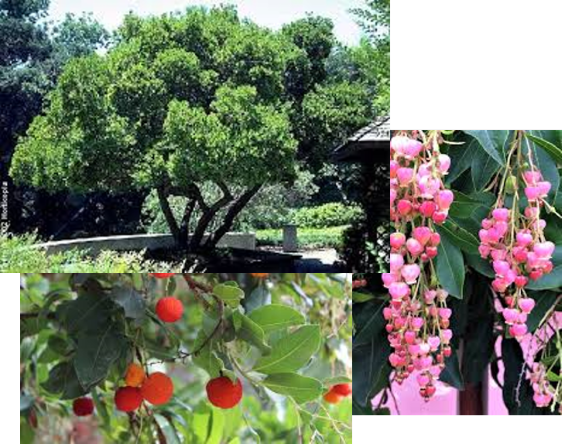 |
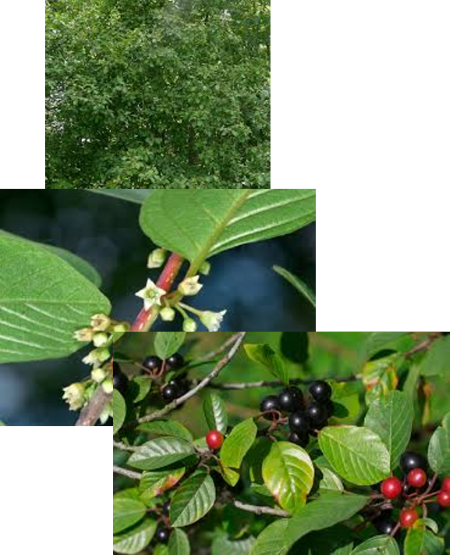 |
Alder Buckthorn (Rhamnusfrangula) Blooms: June to July Zone: 3 to 7 Height: 7’ to 20’ Spread: 13’ Sun: Full sun to half shade Water: Medium to high, prefers damp sites Other: Doesn’t have thorns; can be invasive |
|
Black Tupelo (Nyssa Sylvatica) Blooms: Late spring Zone: 4 to 9 Height: 30’ to 50’ Spread: 20’ to 30’ Sun: Full to part shade Water: Medium Other: Spectacular fall foliage with many shades of yellow, orange, bright red, purple or scarlet that may appear on the same branch; fruit loved by birds |
|
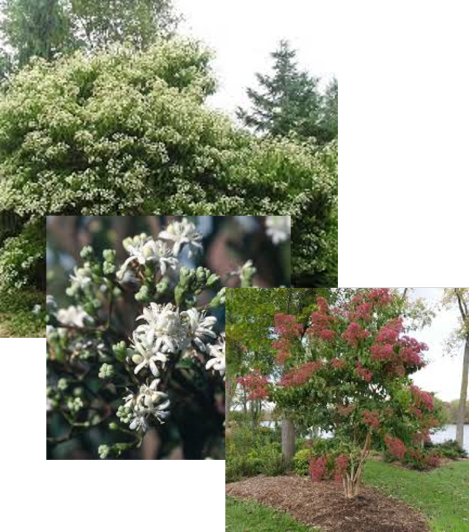 |
Seven Sons Tree (Heptacodium miconioides) Blooms: September Zone: 5 to 9 Height: 15’ to 20’ Spread: 8’ to 10’ Sun: Full sun Water: Medium Tolerates: Most soils Other: Fragrant; in the honeysuckle family; sepals turn from green to pink; available in Portland nurseries; deer resistant |
|
Chaste Tree (Vitex agnus castus) Blooms: Summer Zone: 6 to 8 Height: 15’ to 25’ Spread: 15’ to 25’ Sun: Full Water: Medium especially in hot weather Other: Fragrant; can be kept as a shrub |
 |
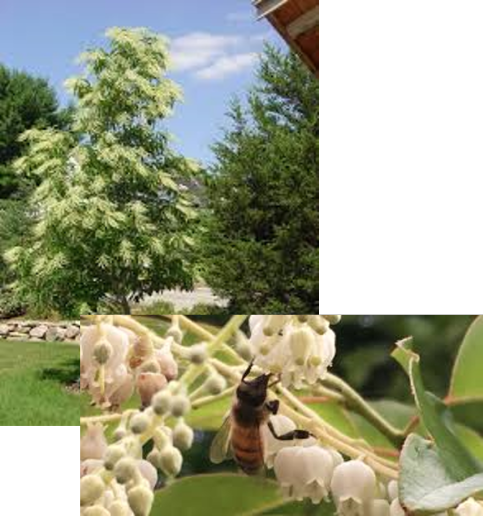 |
Sourwood (Oxydendrum Arboreum) Blooms: July to August Zone: 5 to 9 Height: 25’ to 30’ Spread: 25’ Sun: Full Water: Medium Other: Very fragrant; great fall color; makes a rare and highly sought after honey; available through Portland nurseries; native only to North America; got its name because the leaves are sour |
|
Thundercloud (Prunus Cerasifera) Blooms: Spring Zone: 4 to 9 Height: 15’ to 20’ Spread: 15’ to 20’ Sun: Full Water: Medium Other: Coppery purple foliage throughout growing season; recommended by OSU |
|
|
Snowbell (Styrax Japonica) Blooms: Early Summer Zone: 4 to 8 Height: 20’ to 30’ Spread: 15’ to 20’ Sun: Full Water: Medium |
|
Japanese Ivory Silk Lilac (Syringa Reticulata) Blooms: July Zone: 3 to 8 Height: 30’ Spread: 20’ Sun: Full Water: Medium Tolerates: Low Maintenance Other: Very fragrant |
Search Website:
Please support our loyal Sponsors! Visit their website by clicking on their logos, or simply visit their businesses and thank them for their support of: Tillamook Beekeepers Association. |
